A division is a large military unit or formation, usually consisting of between 6,000 and 25,000 soldiers. In most armies, a division is composed of several regiments or brigades; in turn, several divisions typically make up a corps.
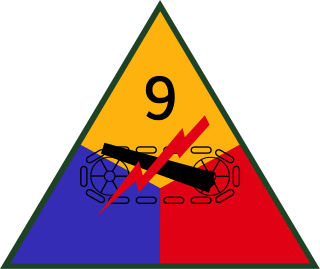
The 9th Armored Division was an armored division of the United States Army during World War II. In honor of their World War II service, the 9th was officially nicknamed the "Phantom Division."

The 35th Infantry Division, formerly known as the 35th Division, is an infantry formation of the United States Army National Guard headquartered at Fort Leavenworth, Kansas.

The 78th Training Division (Operations) ("Lightning") is a unit of the United States Army which served in World War I and World War II as the 78th Infantry Division, and currently trains and evaluates units of the United States Army Reserve for deployment.

The 9th Infantry Division is an inactive infantry division of the United States Army. It was created as the 9th Division during World War I, but never deployed overseas. In later years it was an important unit of the U.S. Army during World War II and the Vietnam War. It was also activated as a peacetime readiness unit from 1947 to 1962 at Fort Dix, New Jersey, and Fort Carson, Colorado, and from 1972 to 1991 as an active-duty infantry division at Fort Lewis, Washington. The division was inactivated in December 1991.
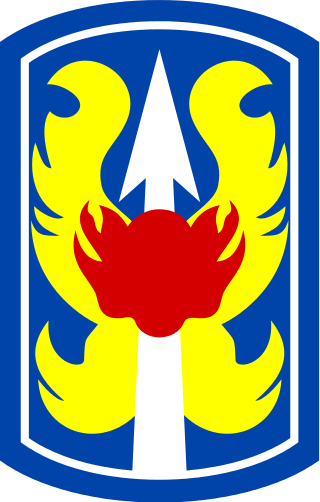
The 199th Infantry Brigade (Light) is a unit of the United States Army which served in the Army Reserve from 1921 to 1940, in the active army from 1966 to 1970 (serving in the Vietnam War), briefly in 1991–1992 at Fort Lewis, and from 2007 as an active army training formation at Fort Moore.

The U.S. 60th Infantry Regiment is a regimental unit in the United States Army. Its 2nd and 3rd Battalion conduct Basic Combat Training.
A tank corps was a type of Soviet armoured formation used during World War II.
Shoulder sleeve insignia (SSI) are cloth emblems worn on the shoulders of US Army uniforms to identify the primary headquarters to which a soldier is assigned. The SSI of some army divisions have become known in popular culture.
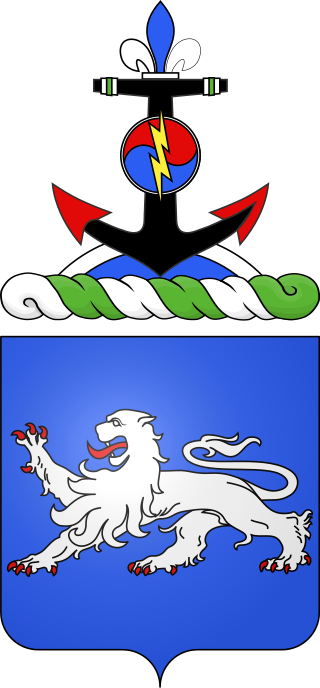
The 68th Armor Regiment is an armored regiment of the United States Army. It was first activated in 1933 in the Regular Army as the 68th Infantry Regiment.

The 15th Cavalry Regiment is a cavalry regiment of the United States Army. It was one of the Expansion Units originally established for the Spanish–American War, but has been a general workhorse unit ever since.

Horses in World War II were used by the belligerent nations, for transportation of troops, artillery, materiel, messages, and, to a lesser extent, in mobile cavalry troops. The role of horses for each nation depended on its military doctrines, strategy, and state of economy. It was most pronounced in the German and Soviet Armies. Over the course of the war, Germany and the Soviet Union together employed more than six million horses.
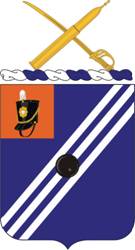
The 76th Field Artillery Regiment is a field artillery regiment of the United States Army. First formed as a cavalry regiment in 1916, the regiment was converted to field artillery in 1917, and served in Europe during World War I with the 3rd Division and as a separate battalion during World War II, as well as in peacetime at Fort Knox, KY, and Fort Devens, MA. Since 1959, the regiment has been a parent regiment under the Combat Arms Regimental System and the U.S. Army Regimental System, with regimental elements serving with the 3rd Infantry Division in Germany and Operation Iraqi Freedom, with the 7th Infantry Division in Korea, and in the Army Reserve. No regimental elements are currently active.

The 102nd Cavalry Regiment is a regiment of the United States Army first established in 1913 and which saw service in World War II.

The 112th Field Artillery Regiment is a Field Artillery Branch regiment of the New Jersey Army National Guard first formed in April 1917. In December 1941, it was the last field artillery regiment in the U.S. Army to convert from horse-drawn to truck-drawn howitzers.
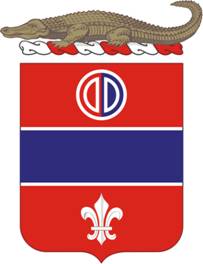
The 116th Field Artillery is a regiment of the Florida Army National Guard. Currently there are two battalions; 2-116th FA is fires battalion for the 53rd Brigade Combat Team, and 3-116th (HIMARS) is part of the 164th Air Defense Artillery Brigade, both of the Florida Army National Guard.
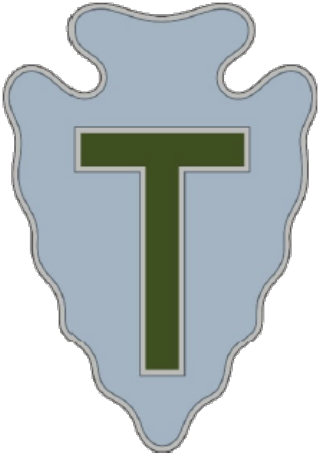
The 72nd Infantry Brigade Combat Team is a unit of the Texas Army National Guard and is subordinate to the 36th Infantry Division.
The 310th Armored Cavalry Regiment was a California-based reconnaissance unit of the United States Army Organized Reserve Corps, which briefly existed after World War II. It was constituted in 1948, partially organized from existing units in 1949, and inactivated in 1950.

The 172nd Cavalry Regiment is an armored cavalry regiment of the Vermont Army National Guard, with one battalion currently active. First organized in 1861, the regiment has seen combat in the American Civil War, World War I, World War II, and the War on Terror. Originally an infantry regiment, elements of the unit were consolidated with an antiaircraft unit in 1959 and converted into an armored regiment. In 1964, the remainder of the 172nd Infantry was consolidated with the 172nd Armor, as an armored regiment. In 2007, elements became an armored cavalry regiment. In 1982, a new infantry unit designated the 172nd Infantry Regiment was organized in the Vermont Army National Guard, but it is not lineally related to the previous 172nd Infantry/Cavalry, sharing the numerical designation only for historical purposes.















